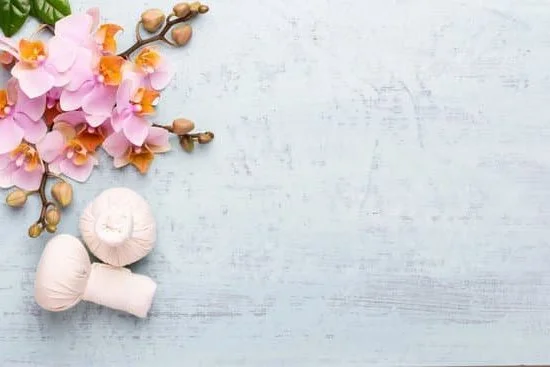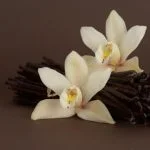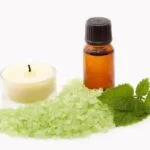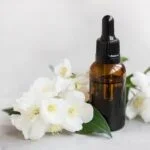Are you looking to enhance your aromatherapy experience with essential oils? In this article, we will explore how to use essential oils in an aromatherapy tank to maximize their benefits. Using essential oils in an aromatherapy tank can provide numerous benefits, such as stress relief, improved sleep, and mood enhancement. However, it is crucial to use them properly to ensure safety and effectiveness.
When it comes to choosing the right essential oils for your aromatherapy tank, there are various factors to consider. Different types of essential oils work well in aromatherapy tanks, and selecting the best ones for your needs is essential. We will discuss the various types of essential oils that are suitable for use in an aromatherapy tank and provide guidance on how to choose the most suitable ones for specific purposes.
Preparing the aromatherapy tank properly is also crucial for achieving maximum effectiveness. We will provide a step-by-step guide on how to fill the tank with water and add the essential oils.
Understanding the different settings on an aromatherapy tank and their impact on the diffusion of essential oils is equally important, and we will explain how different settings can affect the overall experience. By following these guidelines, you can ensure a safe and effective use of essential oils in your aromatherapy tank.
Choosing the Right Essential Oils
When it comes to using essential oils in an aromatherapy tank, choosing the right oils is crucial to ensure that you experience the full benefits of this practice. There is a wide variety of essential oils available, each with its own unique properties and potential benefits. Understanding which types of essential oils work well in aromatherapy tanks and how to select the best ones for your needs is essential for a successful aromatherapy experience.
Types of Essential Oils
There are several popular types of essential oils that are commonly used in aromatherapy tanks, each with their own distinct aroma and potential therapeutic effects. Some popular choices include lavender, eucalyptus, peppermint, and tea tree oil.
Lavender is known for its relaxing and calming properties, making it perfect for use in an aromatherapy tank before bedtime or during moments of stress. Eucalyptus oil is commonly used for its decongestant properties, making it a great choice for individuals looking to clear their sinuses and improve respiratory function.
How to Select the Best Essential Oils
When selecting essential oils for use in an aromatherapy tank, it’s important to consider your personal preferences as well as any specific therapeutic benefits you are seeking. Consider the aroma of each oil and how it may impact your mood or emotions.
Additionally, research the potential therapeutic effects of each oil to ensure that you choose ones that align with your wellness goals. For example, if you are seeking relief from headaches, you may want to consider selecting essential oils known for their analgesic properties, such as peppermint or rosemary oil.
Using Essential Oils in Your Aromatherapy Tank
Now that you have selected the best essential oils for your needs, it’s important to understand how to properly use them in your aromatherapy tank. First, ensure that your tank is clean and free from any residue or build-up from previous uses. Then, fill the tank with water according to the manufacturer’s instructions.
Once the tank is filled with water, add a few drops of your chosen essential oil or blend directly into the water reservoir. It’s important not to overdo it when adding essential oils; a little goes a long way when it comes to diffusing these potent substances.
By following these guidelines for choosing and using essential oils in your aromatherapy tank, you can create a personalized aromatic experience that promotes relaxation and overall well-being.
Preparing the Aromatherapy Tank
First, fill the aromatherapy tank with clean, room temperature water up to the fill line indicated on the tank. It’s important not to overfill or underfill the tank, as this can affect the diffusion of the essential oil. Next, add a few drops of your chosen essential oil into the water. The number of drops will depend on the size of your tank and your personal preference for scent strength.
After adding the essential oil, replace the lid securely on the tank and turn on the diffuser. Allow it to run for a few minutes until you can smell the aroma of the essential oil in the room. If necessary, adjust the settings on your aromatherapy tank to control how strong or subtle you want the scent to be. With these simple steps, you can effectively use essential oils in an aromatherapy tank for maximum effectiveness and enjoyment.
It is always important to follow manufacturer’s instructions when using an aromatherapy tank. Different tanks may have different requirements for adding essential oils or other maintenance tasks such as cleaning and refilling water. Adhering to these guidelines ensures that you are using your equipment safely and in a way that maximizes its lifespan.
| Step | Description |
|---|---|
| 1 | Fill aromatherapy tank with room temperature water up to fill line |
| 2 | Add a few drops of chosen essential oil into water |
| 3 | Replace lid securely and turn on diffuser; allow it to run for a few minutes until scent fills room |
Understanding Aromatherapy Tank Settings
Aromatherapy tanks come with various settings that control the diffusion of essential oils into the air, allowing users to customize their aromatherapy experience. Understanding these settings is crucial to making the most of your aromatherapy tank and ensuring that it effectively disperses the chosen essential oil into the air. Here’s how to use essential oils in an aromatherapy tank and make the most out of its settings.
The first step is to familiarize yourself with the different settings available on your specific aromatherapy tank. Most tanks come with options for adjusting the intensity and duration of diffusion, as well as whether you want continuous or intermittent diffusion. Some tanks even offer color-changing LED lights for added ambiance, further enhancing the relaxation and mood-boosting effects of aromatherapy.
Once you understand the available settings, you can then decide how you want to utilize them based on your preferences and needs. For example, if you prefer a subtle and continuous diffusion of essential oil throughout the day, you may opt for a lower intensity and longer duration setting.
On the other hand, if you only want to use the aromatherapy tank for short bursts at specific times, selecting a higher intensity and shorter duration setting may be more suitable for you.
In addition to understanding how each setting affects diffusion, it’s important to consider how different essential oils may interact with these settings. Certain oils may work best with specific diffuser settings, so experimenting with different combinations can help determine what works best for you.
It’s also important to note that some aromatic compounds are more delicate than others, and thus may require gentler heat or airflow in order not to compromise their therapeutic properties. Once comfortable using specific elements from various kinds of settings in addition using various types of essential oil content will effectively outline which approach best suits all user preference across such devices.
| Settings | Effect |
|---|---|
| Intensity | Determines how strong or subtle the aroma is during diffusion |
| Duration | Controls how long the aromatherapy tank operates before stopping or switching off |
| Intermittent Diffusion | Allows for controlled bursts of diffusion over a period of time instead of continuous operation |
Safety Precautions
When using essential oils in an aromatherapy tank, it’s crucial to prioritize safety and understand the potential risks involved. The concentrated nature of essential oils means that they can be potent and may cause adverse effects if not used properly. Therefore, it’s important to familiarize yourself with safety precautions and guidelines to ensure a safe and enjoyable aromatherapy experience.
Understanding Dilution Ratios
One of the most important safety precautions when using essential oils in an aromatherapy tank is understanding dilution ratios. Essential oils are highly concentrated plant extracts, which means they should never be used undiluted in an aromatherapy tank. Diluting essential oils with water or carrier oils helps to reduce the risk of skin irritation, allergic reactions, and other adverse effects. Generally, a few drops of essential oil diluted in water is sufficient for use in an aromatherapy tank.
Potential Side Effects
While essential oils offer numerous benefits, it’s also important to be aware of potential side effects. Some individuals may be more sensitive to certain essential oils and could experience allergic reactions or skin irritation. Additionally, some essential oils can interact with certain medications or medical conditions. It’s crucial to research each essential oil before use and consult with a healthcare professional if you have any concerns about potential side effects.
Proper Storage and Usage
To ensure the safe use of essential oils in an aromatherapy tank, it’s important to store them properly and use them as directed. Essential oils should be stored in dark glass bottles away from direct sunlight and heat to preserve their potency.
When adding essential oils to the water in your aromatherapy tank, always follow the manufacturer’s instructions for the recommended amount of oil for your specific model. Avoid overuse of essential oils, as this can lead to overpowering scents and potentially cause respiratory irritation or headaches.
By understanding these safety precautions, you can enjoy all the benefits of using essential oils in your aromatherapy tank while minimizing potential risks. Taking the time to educate yourself on safe usage practices will ensure a positive and effective aromatherapy experience for both physical and mental well-being.
Benefits of Aromatherapy
Using essential oils in an aromatherapy tank can provide a wide range of benefits for both physical and mental well-being. The key is to understand how to properly use essential oils in the tank to maximize their effectiveness. Here are some of the many benefits of using essential oils in an aromatherapy tank:
- Stress relief: Certain essential oils, such as lavender, chamomile, and ylang-ylang, have calming properties that can help reduce stress and anxiety. When used in an aromatherapy tank, these oils can create a relaxing environment that promotes overall well-being.
- Improved sleep: Aromatherapy has been shown to have a positive impact on sleep quality. Essential oils like clary sage, bergamot, and sandalwood can be diffused in an aromatherapy tank to create a soothing atmosphere that promotes better sleep patterns.
- Mood enhancement: The use of uplifting essential oils like lemon, peppermint, and sweet orange in an aromatherapy tank can help improve mood and increase feelings of positivity. These scents can have a revitalizing effect on the mind and body.
Incorporating essential oils into an aromatherapy tank is a simple but effective way to experience these benefits. By properly preparing the tank and selecting the right oils, it’s possible to create a personalized aromatic environment that supports overall wellness.
Here are some tips on how to use essential oil in aromatherapy tanks:
- Begin by filling the aromatherapy tank with water according to the manufacturer’s instructions.
- Add 5-10 drops of your chosen essential oil into the water reservoir. Be mindful of not adding too much oil as this could overpower the scent or cause irritation.
- Turn on the aromatherapy tank and select your desired settings for diffusion strength and duration.
- Sit back, relax, and enjoy the benefits of your selected essential oil blend as it fills your space with its therapeutic aroma.
By following these steps and being informed about safety precautions, you can effectively utilize essential oils in your aromatherapy tank for improved wellness.
Tips for Enhancing Aromatherapy Experience
When using an aromatherapy tank with essential oils, there are several tips and tricks that can enhance the overall experience and maximize the effectiveness of the oils. Here are some additional tips to consider:
- Use specific blends for certain purposes: Certain essential oil blends can be especially effective for specific purposes. For example, lavender and chamomile are often used to promote relaxation and improve sleep, while peppermint and eucalyptus can help with congestion and respiratory issues. Consider your desired outcome and choose essential oil blends accordingly.
- Experiment with different combinations: Don’t be afraid to experiment with different combinations of essential oils to find what works best for you. You may find that a certain combination of scents helps you feel more focused and energized, while another combination helps you unwind after a long day.
- Adjust the intensity: Many aromatherapy tanks allow you to adjust the intensity of the diffusion. If you find that a particular scent is too strong or not strong enough, adjust the settings on your tank until you find a balance that works for you.
- Consider diffusing times: Depending on your needs, you may want to adjust the amount of time your aromatherapy tank runs each day. For example, if your main goal is to promote relaxation in the evenings, consider setting your tank to run for a few hours before bed.
Overall, using essential oils in an aromatherapy tank can be a wonderful way to enhance your overall well-being. By following these tips and experimenting with different blends and settings, you can create a personalized aromatherapy experience that is tailored to your individual needs and preferences.
Cleaning and Maintenance
In conclusion, using essential oils in an aromatherapy tank can be a wonderful way to experience the therapeutic benefits of aromatherapy. However, it is important to use them properly to ensure safety and effectiveness. Choosing the right essential oils is crucial, as different types have different properties and effects. It is also important to prepare the tank properly by filling it with water and adding the essential oils in the correct manner.
Understanding the settings on an aromatherapy tank is also important, as this can affect how the essential oils are diffused into the air. Safety precautions should always be observed when using essential oils, including dilution ratios and being aware of potential side effects. Additionally, knowing the various benefits of aromatherapy, such as stress relief, improved sleep, and mood enhancement, can help users make the most of their aromatherapy tank.
For those looking to enhance their aromatherapy experience, there are tips and tricks for maximizing the effectiveness of essential oils in an aromatherapy tank. This includes using specific blends for certain purposes or creating a relaxing ambiance with gentle lighting and soothing music.
Lastly, proper cleaning and maintenance of the aromatherapy tank is essential to ensure it continues to work effectively with essential oils. By following these guidelines and suggestions on how to use essential oil in an aromatherapy tank, individuals can fully enjoy the therapeutic benefits that aromatherapy has to offer.
Frequently Asked Questions
How Do You Add Essential Oils to Aromatherapy?
Essential oils can be added to aromatherapy by diluting them with a carrier oil and applying them to the skin, inhaling them directly from the bottle, or diffusing them in the air.
How Do You Use Oil in an Aroma Diffuser?
Using oil in an aroma diffuser involves adding a few drops of your favorite essential oil into the water tank of the diffuser. Then, turn on the diffuser to disperse the oil into the air, filling your space with its scent.
Do You Mix Water With Essential Oils in a Diffuser?
It is recommended to mix water with essential oils in a diffuser. Water helps to disperse the oils in the air more effectively and safely. Without water, undiluted essential oils could be too concentrated and overpowering when diffused.

Are you looking for a natural way to improve your health and wellbeing?
If so, aromatherapy may be the answer for you.





